
SALT successes in 2020 and what's next in 2021
As SALT begins its fourth year, we reflect on where we are and where we’re headed in our work to advance seafood traceability around the world.
What work are you most proud of that came out of SALT’s third year?
It has been really exciting to see how much the SALT community has grown over the last year. The project now includes more than 1,000 participants, experts from around the world, and organizations like the United Nations Food and Agriculture Organization (FAO), the International Union for Conservation of Nature (IUCN), and governments from the European Union (EU), Ghana, Indonesia, Japan, Tanzania, the United States (U.S.), and throughout Southeast Asia. Reflecting this growth and increased awareness of the project, SALT was featured in several key reports on illegal, unreported, and unregulated (IUU) fishing in 2020 (listed below).
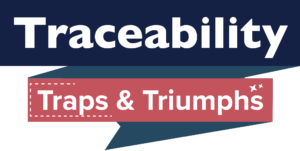
We were honored to present on traceability, including linkages to labor and security, at seven global events such as the Center for Strategic and International Studies Second Annual Ocean Security Forum, Seafood 2030, the Tokyo Sustainable Seafood Symposium, a Korean Maritime Institute event, and the ICT4Fisheries workshop in South Africa. We also hosted our own Traceability Traps & Triumphs event discussing common pitfalls in the journey towards seafood traceability, and how one can avoid or overcome them. It was very gratifying to feature not one but two panels of all-women experts. With over 100 participants at each panel, this is definitely a topic we will be returning to.
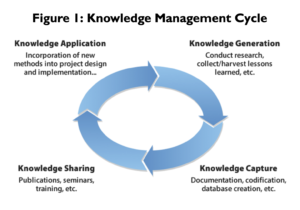
The last year also afforded us an opportunity to pause & reflect on the project as a whole. The first few years of SALT centered around the first three steps of the knowledge management cycle: generation, capture, and dissemination of traceability knowledge. Going forward, the SALT project has shifted its focus toward facilitating acquisition and application of traceability information, including an emphasis on regional and country-focused engagement in service of the global community.
Of course, none of this work would be possible without our amazing team at FishWise. I’m continually thankful to be working with such passionate and knowledgeable people!
- Introduction
- Stephani Mangunsong (Independent Expert, formerly of MDPI)
- Cristina Velez Srinivasan (USAID, Regional Development Mission for Asia)
- Becky Fontanilla (Freelance Consultant, Philippines)
- Q&A
- Introduction
- Teresa Ish (Walton Family Foundation)
- Celeste Leroux (Virgil Group LLC)
- Momo Kochen (Future of Fish)
- Cecilia Blasco (SmartFish)
- Q&A
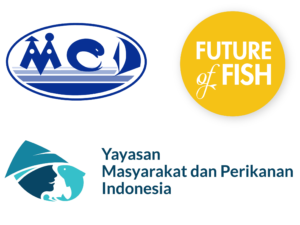
Echoing the shift towards more regional support Jenny mentioned, it was thrilling to award 3 small grants in 2020. These grants target seafood producing countries and the seafood industry, catalyzing progress and advancing learning around electronic catch documentation and traceability (eCDT). In Vietnam, the Centre for MarineLife Conservation and Community is conducting learning events and knowledge capture to inform Vietnam’s National eCDT Guidelines and Roadmap. In Indonesia, MDPI lead a co-design workshop on emerging eCDT technology in Indonesia’s tuna supply chain (results of this workshop coming soon!). Future of Fish is working with Helen Packer to address knowledge gaps around comprehensive (social, economic, and ecological) return on investment in eCDT systems. This year especially highlighted the advantages of partnering with teams already working in key regions, as these projects have allowed SALT to continue expanding our international network despite COVID-19 travel cancellations.
Launching SALT’s website at the end of our second year was a huge accomplishment, and over the last year it’s been wonderful to see how many people are already accessing it for their seafood traceability work. In one year alone, the website had 5,000 unique visitors from 124 countries. More than 1,300 resources have been downloaded from the Dive Deeper Library and the Seascape map of traceability efforts averages over 100 visitors a month. We’re continuously sharing new resources, efforts, and stories on the website.

I am also grateful Brynn O’Donnell and I were able to visit the Philippines for the USAID Oceans and Fisheries Partnership (USAID Oceans) closing event in February, right before the COVID-19 shutdown. We created an interview-based story on gender and traceability work in the Philippines by USAID Oceans you can read below. While that would be the last of our site visits in 2020, I was able to revisit my trip to Belize in 2019 by producing a video with Julie Robinson of The Nature Conservancy on what she learned from implementing traceability at a lobster coop.
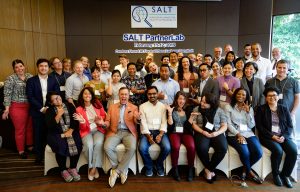
Aside from the Traceability Traps & Triumphs event Jenny mentioned, seeing the expansion of our online community has been a highlight for me. Last year we launched two newsletters, a quarterly update and a monthly website digest, to more effectively share support, resources, and opportunities with people working towards seafood traceability. Now we have nearly 900 subscribers! Our social media engagement has been increasing as well with a combined audience of about 1500 across Twitter, LinkedIn and Instagram. It’s inspiring to see this growing community leverage online spaces to communicate and work together despite our current inability to gather in person.
A big part of the third year for me was supporting the collaborative development of SALT’s Comprehensive eCDT Principles. It was a real pleasure to work with so many experienced people representing NGOs, the seafood industry, and governments from 17 countries. We have already completed two drafts of the principles and look forward to releasing the final product early this year which will include both a document and an interactive online space.
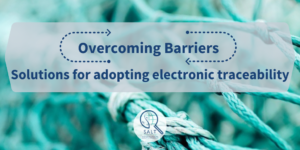
Another exciting project I worked on in SALT’s third year was writing the popular five-part series on the challenges and solutions for seafood companies adopting eCDT. Topics include such obstacles as misunderstanding the full breadth of benefits, interoperability, choosing the right technology, and human behavior. Give them a read below.
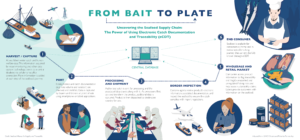
A big project I’m proud of working on is the Bait to Plate infographic designed to visualize and easily communicate the ideal eCDT future we are working towards. I also had the opportunity to practice my Spanish working with Cecilia Blasco of SmartFish on the Spanish translation of the infographic, available now in the Dive Deeper library!
It’s also been awesome to see SALT partner more closely with the Global Dialogue on Seafood Traceability (GDST) and the Global Tuna Alliance (GTA). GDST’s standards for key data elements is a huge milestone for seafood traceability and the SALT team was excited to offer our endorsement and promote their standards on our website and through our networks.
SALT worked with Tom Pickerell to provide insights and resources for the GTA’s Traceability toolkit, also hosted in the Dive Deeper library. I love knowing that my work is not only creating new seafood traceability resources but also helping to make existing tools easier for the right people to find at the right time.
What work are you most excited about heading into SALT’s fourth year?

As I mentioned earlier, SALT recognizes the importance of focusing on specific country programs and regional support. I am very much looking forward to leveraging our growing network of experts, industry connections, resources, and applying our knowledge to support seafood producing countries with an interest in eCDT. Specifically, we’ve identified promising opportunities in Latin America, especially in Peru, Mexico, and Ecuador where governments and partners are interested or currently working on traceability efforts for their seafood sector.
In the near-term, we are looking forward to leading an upcoming SAFET webinar on traceability.
We have several projects in motion I’m excited to see coming to fruition next year. I’m looking forward to the evaluation framework that Future of Fish is developing in collaboration with Helen Packer. The framework will provide metrics, methods, and tools including questionnaires, interview and focus group guides, and more to evaluate the social, ecological, and economic benefits of an eCDT system. I am also looking forward to the exciting work underway by small grant recipient, MCD, which will include research and learning events to inform the National eCDT Guidelines and Roadmap in Vietnam.
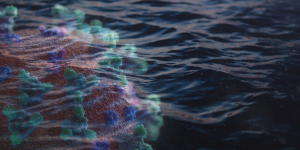
While 2020 may be in the rearview, COVID-19 is still top of mind. We’re currently researching COVID-19 implications for seafood traceability in South and Southeast Asia, and will be releasing a thought piece on this work in 2021. We hope this work will help the SALT community overcome some of the unique challenges the pandemic has presented, and capitalize on the opportunities for advancing seafood traceability.
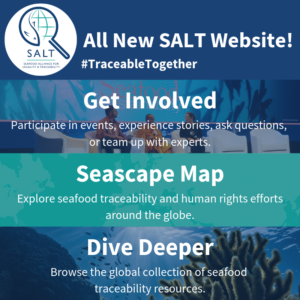
The big project I’m excited about is reforming our website. It won’t be a complete overhaul, but as SALT focuses work in specific regions and develops projects for specific audiences, we’ll be exploring how to package the information for a more effective learning experience. One of the new experiences you can look forward to is an interactive tuna supply chain. As users follow a tuna’s journey, they will be able to see the complexity of data transfer through the supply chain and where it can be lost; areas of risk for IUU fishing and related crimes; and resources like the new GDST standards that improve transparency and mitigate areas of risk. In addition to new visuals and more original content for blogs, video and podcasts, the website changes will also be dictated by you–our website visitors. You’ll be seeing surveys to collect your feedback!
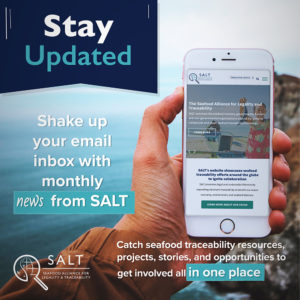 We’ve developed several informational graphics over the last year that I’m excited to share with our community. They will be very useful for communicating key seafood traceability concepts to a general audience, hopefully growing the network of people thinking about and working towards seafood traceability. These graphics will debut on SALT’s Instagram and our other social media channels in the new year, be sure to follow us if you haven’t already! Our newsletters will also have a little graphical glow-up coming soon. If you’re not subscribed I highly encourage you to do so to catch all these exciting upcoming projects!
We’ve developed several informational graphics over the last year that I’m excited to share with our community. They will be very useful for communicating key seafood traceability concepts to a general audience, hopefully growing the network of people thinking about and working towards seafood traceability. These graphics will debut on SALT’s Instagram and our other social media channels in the new year, be sure to follow us if you haven’t already! Our newsletters will also have a little graphical glow-up coming soon. If you’re not subscribed I highly encourage you to do so to catch all these exciting upcoming projects!
As I mentioned, the launch of SALT’s Comprehensive eCDT Principles is a project I’m particularly looking forward to this year. Implementing traceability in seafood’s often complex supply chain is extremely challenging. Just knowing where to start or how to find helpful resources can be difficult. With the principles, we’ve done the tricky work of hunting down resources, talking with experts, and identifying a process to walk people through implementing a comprehensive traceability system. We’re glad to be able to help answer questions and connect people with the expert help they need to get their seafood traceability programs underway!
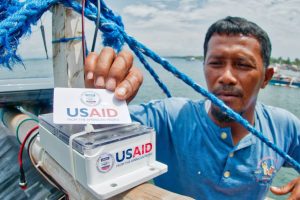
In addition to launching the principles, we’ll also be premiering a case study based on what we learned while visiting the USAID Oceans learning site in the Philippines last year. We hope this will be useful for eCDT implementers to learn from the challenges and successes of their project. We’re also planning to continue checking in on eCDT efforts in the Philippines, now that the USAID Oceans project has concluded. We hope to address the question, “what happens to a traceability system after the pilot phase ends?” Keep an eye on our newsletters and Story Hub to catch these updates.
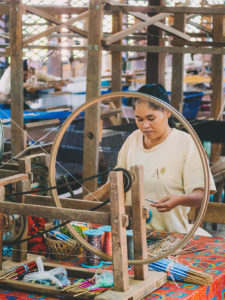
I’m excited about creating a comparison of traceability across different sectors and commodities. We plan to look especially closely at sectors that have integrated social responsibility into their traceability projects. We hope that sharing the lessons learned from other industries that have adopted traceability practices will help inform the SALT community of potential opportunities and barriers to continued eCDT implementation.
Another new resource SALT will be working on is a new tool synthesizing requirements for markets exporting seafood products to the United States, European Union, and Japan. We’ll be diving deep to look at required key data elements, critical tracking events, and specific species targeted by the import regulations. This guide will help producer country governments understand the regulatory landscape as they continue to work towards the implementation of their own eCDT systems. Once this new tool is completed we’ll be able to add the relevant import regulations to SALT’s Seascape map as well.
As you can seen despite the disruptions of a global pandemic, 2020 was hugely productive for SALT, and 2021 promises to deliver even more tools and resources to support the implementation of electronic seafood traceability around the world. To stay updated on the progress of these projects follow us on Twitter, LinkedIn, and Instagram, and subscribe to the SALT newsletter.
If you have any questions or comments about our work, please do drop us a line. Cheers to the new year!
